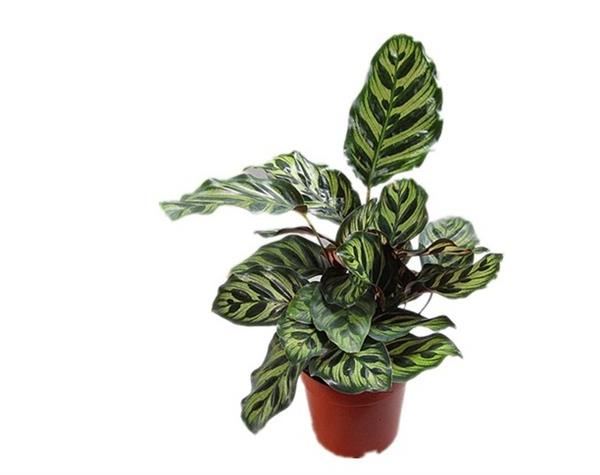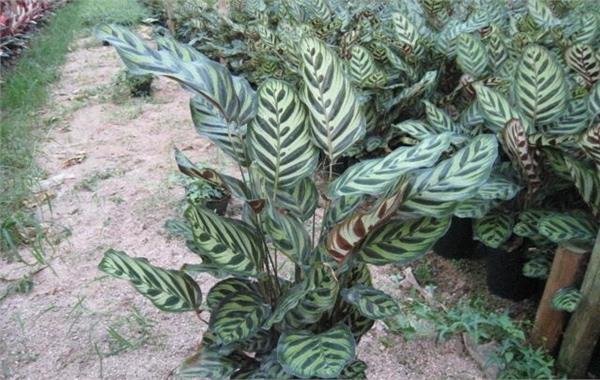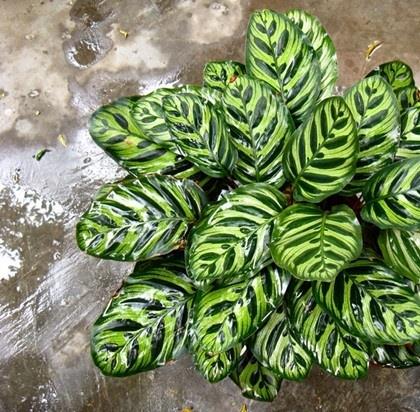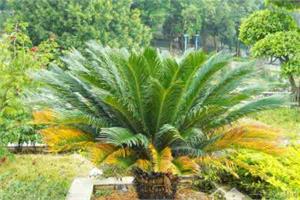How to raise Peacock flowering Diseases and Control methods of Peacock flowering
Air pollution is becoming more and more serious, more and more people begin to choose to plant plants at home to keep the air fresh at home. Among many plants, peacock blooming flowers are very popular, but because the unique growth conditions of peacock blooming flowers make many people worry about its breeding methods, let's learn more about how peacocks bloom well and how to control diseases.
The breeding method of peacock blooming flowers: fertilization
Rarefied liquid fertilizer should be applied every half a month in the peak growing season, and attention should be paid not to apply too much nitrogen fertilizer, so as to avoid bad growth phenomena such as leaf speckle fading, leaf thickening, petiole softness and so on. The application ratio of nitrogen, phosphorus and potassium should be 1 ∶ 1 ∶ 1. Using soilless cultivation, the inorganic nutrient solution of all elements can be irrigated once or twice a month during the growth period.
When the plant is short of fertilizer, the plant is obviously short, the leaf color is dim, and the golden luster is not bright. During the growth period, dilute liquid fertilizer should be applied every 20 days, and the ratio of nitrogen, phosphorus and potassium should be 2 ∶ 1 ∶ 1, which can make the leaves glossy, and the proportion of nitrogen fertilizer should not be too large. If 0.2% liquid fertilizer is sprayed directly on the leaf surface every 10 days, it is very beneficial to sprouting and growth. Stop spinning fertilizer in winter and summer.
The culture method of peacock blooming flower: temperature
The optimum growth temperature of peacock bamboo taro is about 22 ℃. When the summer temperature is higher than 35 ℃, not only the plant growth is stagnant, but also the leaf color turns yellow and loses ornamental value. The growth of the plant slows down when the winter temperature is lower than 15 ℃, the leaves below 10 ℃ are easy to curl, and below 5 ℃ are vulnerable to freezing injury, which will lead to the death of the whole plant. Therefore, attention must be paid to cold protection and heat preservation in winter, and the room temperature should be kept above 13 ℃.

The cultivation method of peacock blooming flowers: light
From May to September, the growing season should be placed in a shady or semi-shady place to maintain a light transmittance of 40% and 60%, so as to avoid direct sunlight. Excessive light or dry air can easily lead to scorched leaf tips and dull leaf markings; but the light should not be too weak. If placed in a dark room for a long time, the temperature is low and the light is insufficient, it will also grow weak, not conducive to the formation of leaf color and lose the unique metallic luster of the leaf. Direct sunlight through glass is acceptable in winter.
Culture method of peacock blooming flower: soil
Pot planting should use loose, fertile, well-drained, humus-rich slightly acidic loam, generally can be mixed with 3 parts of rotten leaf soil, 1 part of peat or sawdust, 1 part of sand, and add a small amount of bean cake as base fertilizer, avoid heavy sticky garden soil. When putting on the basin, the bottom of the basin is first padded with 3 inch thick coarse sand as a drainage layer to facilitate drainage.
The culture method of peacock blooming flower: water
Adequate moisture should be given during the growing period, especially in summer and autumn, in addition to keeping the basin soil moist, it is also necessary to spray water to the leaves to cool and moisturize; it requires a higher air humidity, preferably up to 70% to 80%; avoid dry air and dry basin soil, but do not accumulate water. Moisture should be controlled after the end of autumn in order to resist cold and survive the winter. Keep the dry environment in winter, if it is too wet, the basal leaves will be yellow and scorched, which will affect its ornamental value.
During the growing period, it is necessary to fully keep the basin soil moist, and the basin soil should be watered if it is not dry, otherwise the leaves are easy to curl the scorched edge. Water is often sprinkled on the plant page in summer. Pay attention to the basin soil should not be too wet, otherwise it will cause root rot, or even death.

The breeding method of peacock blooming flowers: humidity
The suitable air humidity is 70%-75%, and the humidity requirement is higher when sending new leaves, so the growing season should be fully watered to keep the soil moist, but not stagnant water. Spray water on the leaves for 2 or 3 times a day in summer, and sprinkle water on the surrounding ground to humidify and cool down to facilitate its growth. Watering should be controlled in winter, and the basin soil can be slightly wet. The indoor air in northern winter is dry, except that the foliage can be sprayed with water similar to room temperature around noon during the day, it is best to put on a plastic film cover to keep warm and moisturizing at night. In order to keep the leaves fresh and tidy and shining, gently scrub the leaves with clean water every half a month.
Breeding method of Peacock blooming Flower: disease Control
There are fewer diseases and insect pests, but if the ventilation is poor and the air is dry, shell insects will also occur. 1500 times dimethoate spray will be used to control the disease.
The yellow-brown spot of leaf spot formed small yellow spots near the edge of the leaf or in the center of the leaf at the initial stage of the disease, and gradually expanded, deepened the color, turned to yellowish brown, and there was a relatively obvious halo around the disease spot, along with the expansion of the disease spot. The leaves gradually withered and shrunk, so that they fell off and died. The pathogen is the sporulation of the half-known fungus Deutschia. The causes of the disease are high temperature and humidity, poor air circulation, over-dense arrangement of plants, too many weeds and rotten leaves in the cultivation environment, excessive application of nitrogen fertilizer, and overgrowth of plants. Young tissue is easy to get sick.
The control method is to strengthen fertilizer and water management, properly increase the application of phosphorus and potassium fertilizer, and apply less nitrogen fertilizer to promote plant growth and enhance its resistance. Timely removal of diseased leaves and weeds to reduce the source of infection. Plant placement is not easy to be too dense, properly ventilated and transparent, reduce the humidity of the environment, can reduce the disease. Spray protection in the event of illness. The medications are: 50% carbendazim 600 times to 800 times, or 75% chlorothalonil 600 times to 800 times, 50% mancozeb 500 times to 600 times, every 7 to 10 days. All kinds of drugs should act alternately to prevent bacteria from developing drug resistance.

The above introduction of this article, look forward to the need for your assistance, if you have other questions, you can pay attention to the No. 1 home network, for more information.
The above introduction of this article, look forward to the need for your assistance, if you have other questions, you can pay attention to the No. 1 home network, for more information.
- Prev

How to cultivate cactus and how to deal with the problem of cactus diseases and insect pests
How to cultivate cactus and how to deal with the problem of cactus diseases and insect pests
- Next

Prevention and control of diseases and insect pests of iron tree matters needing attention in culture of iron tree
Prevention and control of diseases and insect pests of iron tree matters needing attention in culture of iron tree
Related
- Wuhan Hospital Iron Tree Blooming Result Was Instantly Frightened by the Gardener Master
- Which variety of camellia is the most fragrant and best? Which one do you like best?
- What is the small blue coat, the breeding methods and matters needing attention of the succulent plant
- Dormancy time and maintenance management of succulent plants during dormancy
- Minas succulent how to raise, Minas succulent plant pictures
- What are the varieties of winter succulent plants
- How to raise succulent plants in twelve rolls? let's take a look at some experience of breeding twelve rolls.
- Attention should be paid to water control for succulent plants during dormant period (winter and summer)
- Watering experience of twelve rolls of succulent plants
- Techniques for fertilizing succulent plants. An article will let you know how to fertilize succulent plants.

